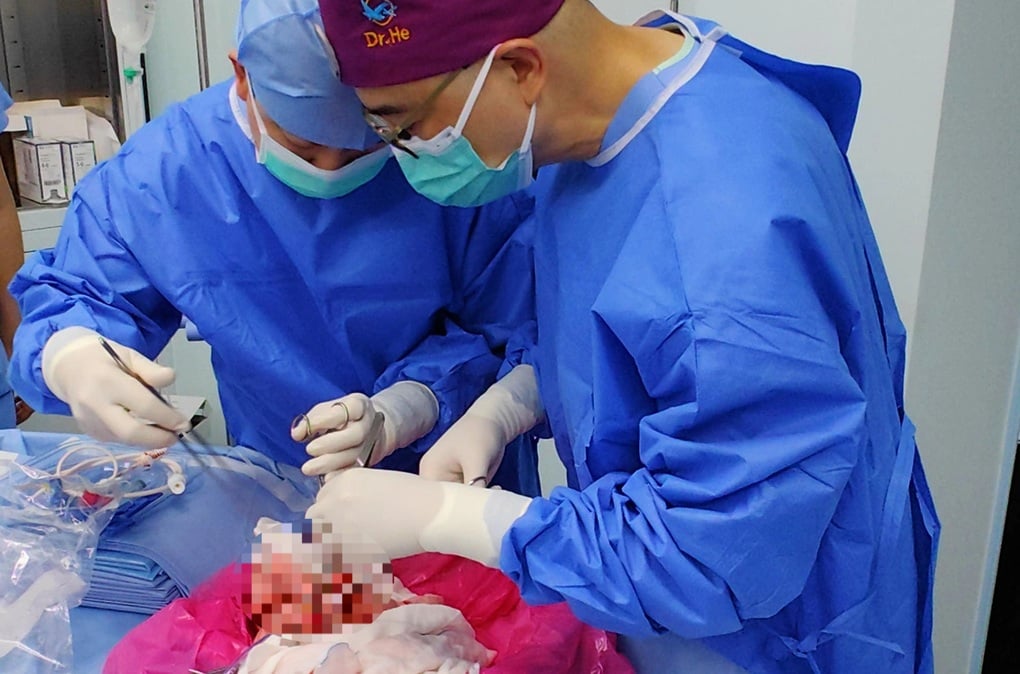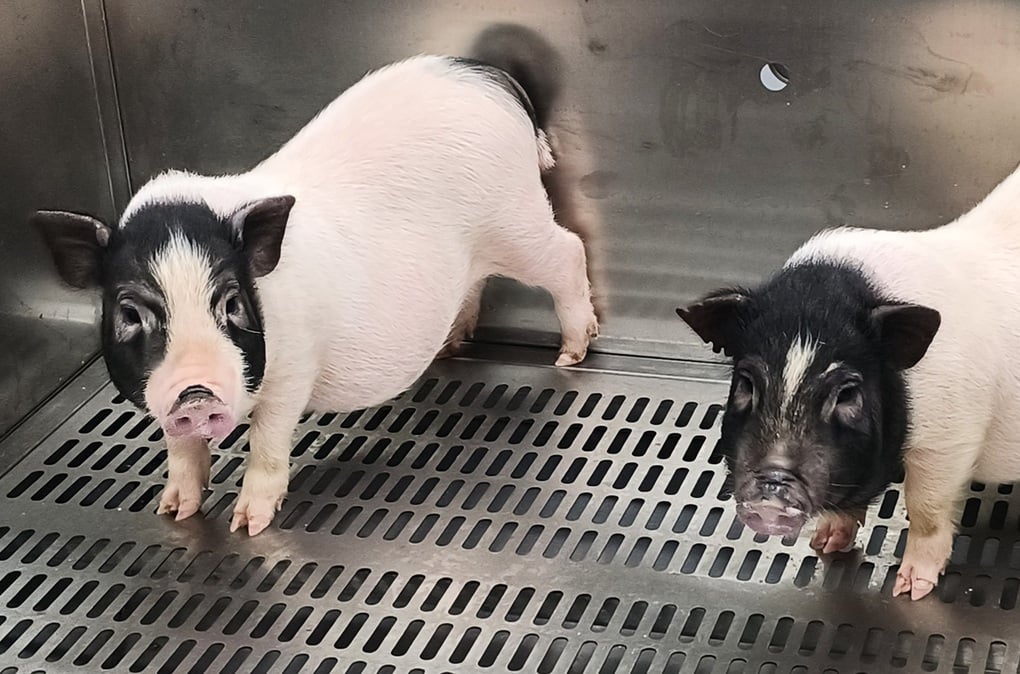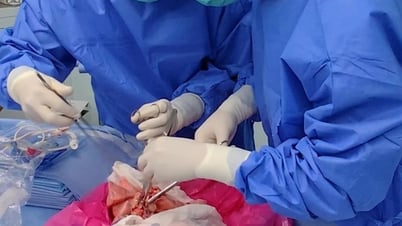Step forward to hope
Doctors in China have successfully performed a lung transplant from a genetically modified pig into a 39-year-old brain-dead patient.
The results, published in the journal Nature Medicine, showed that the transplanted lungs functioned continuously for nine days without any signs of acute rejection. This is the first time in the world that a transplanted pig lung has been able to function in a human body for so long.
Doctors in China have successfully performed a lung transplant from a genetically modified pig into a 39-year-old brain-dead patient (Photo: Nature Medicine).
Xenotransplantation, which is the transfer of organs from animals to humans, is considered a potential direction in the context of extremely scarce global organ donation sources.
According to the World Health Organization (WHO), only about 10% of the need for organ transplants is currently met. This initial success is therefore expected to open up new opportunities in solving the shortage.
However, experts remain cautious.
Dr. Justin Chan, a lung transplant specialist at the NYU Langone Transplant Institute (USA), said that this is a promising project but only at the conditional level.
“These lungs cannot sustain independent life for patients,” he stressed.
Professor Andrew Fisher, Newcastle University (UK), also agreed that this was a small step forward, not enough to confirm that the era of pig lung transplants for humans has truly begun.
Specific challenges to the lungs
In recent years, medicine has experimented with transplanting genetically modified pig hearts, kidneys and livers into humans, with some patients living for months after surgery.
But the lungs have always been considered the most difficult organ to conquer.
Bama Xiang pigs are used to grow organs for transplant (Photo: ClonOrgan).
Professor Fisher explains that each breath means the outside environment directly enters the body. Therefore, the lungs need an extremely sensitive immune system to fight bacteria and foreign agents.
In contrast, in organ transplantation, doctors want the immune system to be suppressed so that the new organ is not rejected. This paradox makes the lung the most difficult organ to adapt to in xenotransplantation.
In the recent transplant, doctors used lungs from Bama Xiang pigs that had been edited with six genes. The lungs functioned for 216 hours, but after just one day, fluid accumulation and tissue damage began to appear.
Despite high doses of immunosuppressants, the transplanted organ was gradually attacked by antibodies. Experts note that the outcome was also affected by the patient’s remaining natural lung to support respiratory function, and the inflammation typical of brain death further complicates the assessment.
Future direction
Scientists say further optimization of immunosuppressive drug regimens, refinement of gene editing techniques, and improvements in lung preservation methods are needed. More importantly, further studies in living patients are needed to determine the long-term sustainability of the procedure.
In parallel with this research, a number of other strategies are also being deployed, such as cultivating “humanized” organs in animal bodies, regenerating organs from stem cells, or regenerating donated lungs that were initially discarded.
Professor Fisher said that the method of regenerating donated lungs could be applied in the next few months and would certainly make a big difference in the near future.
The success in China is therefore considered an important milestone, but it is still only a beginning. There are many hurdles to overcome on the road to making pig lungs a safe, widespread, life-sustaining organ source for transplants for humans.
Source: https://dantri.com.vn/khoa-hoc/lan-dau-tien-cay-ghep-phoi-lon-cho-nguoi-20250826080132720.htm









![[Photo] Multi-colored cultural space at the Exhibition "80 years of the journey of Independence - Freedom - Happiness"](https://vphoto.vietnam.vn/thumb/1200x675/vietnam/resource/IMAGE/2025/8/26/fe69de34803e4ac1bf88ce49813d95d8)
![[Photo] Hanoi: Authorities work hard to overcome the effects of heavy rain](https://vphoto.vietnam.vn/thumb/1200x675/vietnam/resource/IMAGE/2025/8/26/380f98ee36a34e62a9b7894b020112a8)































































































Comment (0)